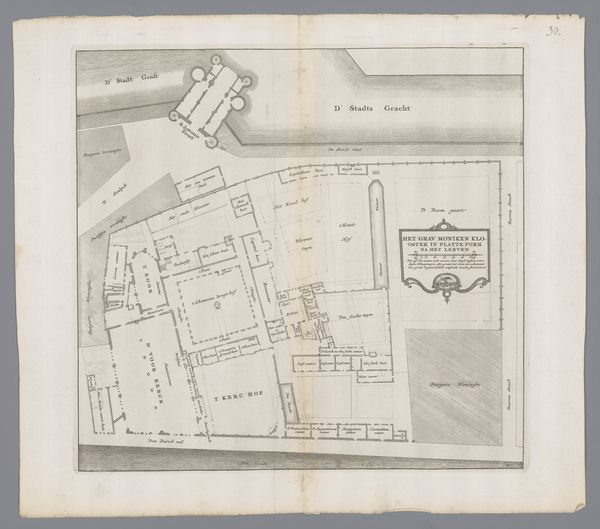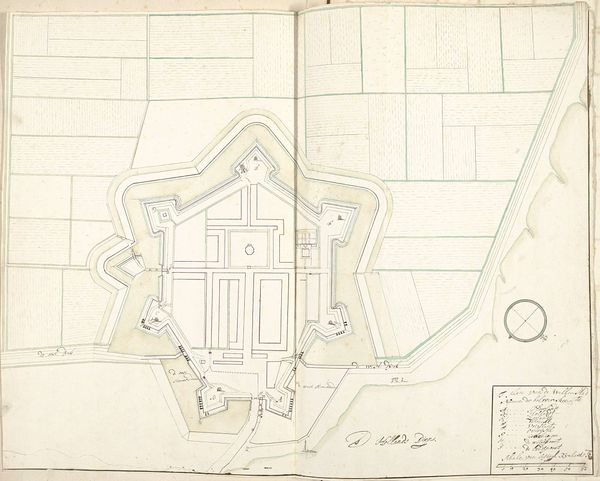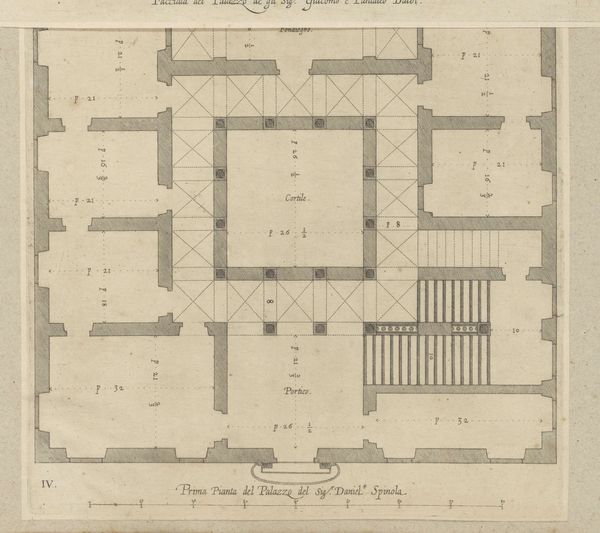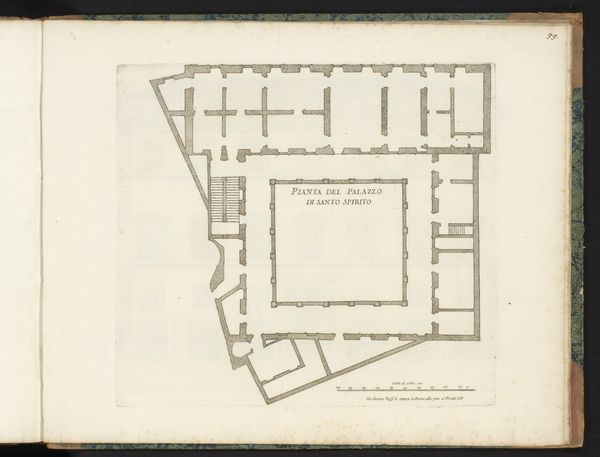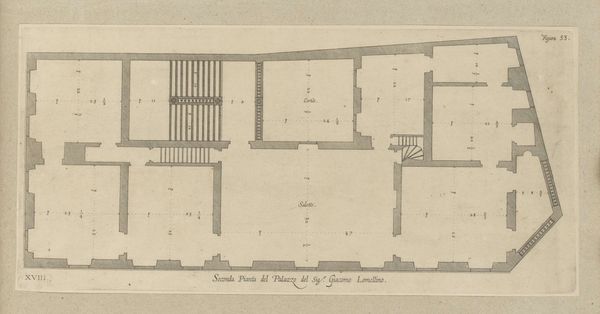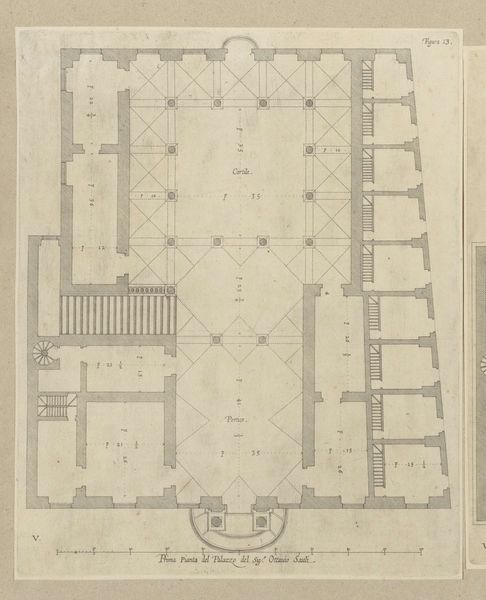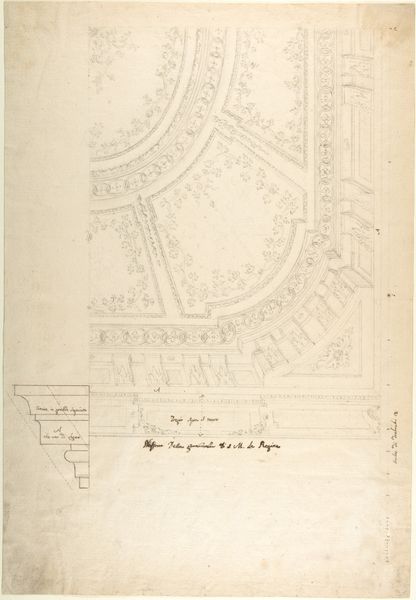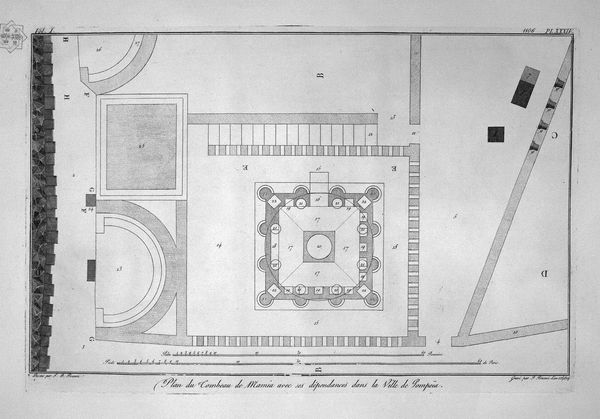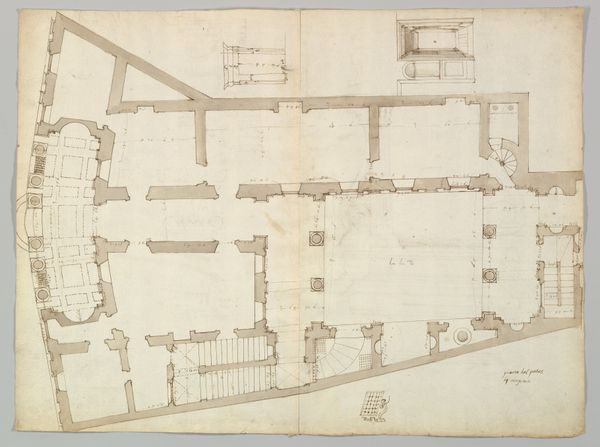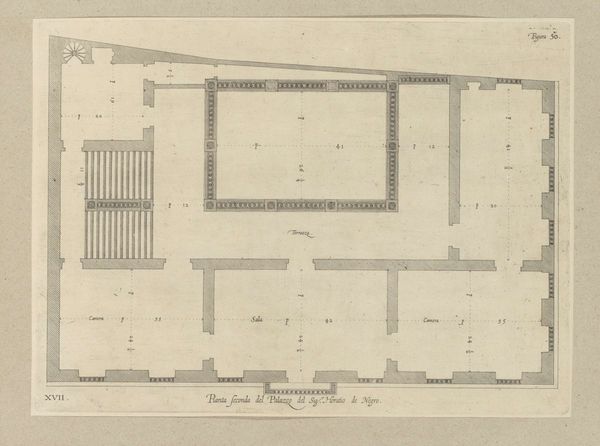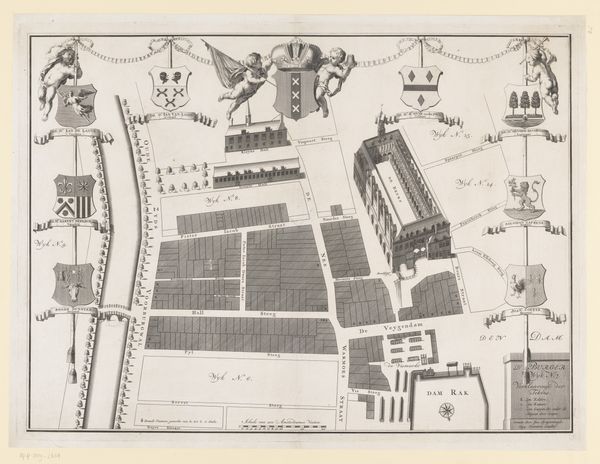
Dimensions: height 115 mm, width 152 mm
Copyright: Rijks Museum: Open Domain
Isaac Weissenbruch made this plan of the Anna Paulownapark in The Hague, with ink, in the 19th century. Note the arrow indicating the North at the top left; it is more than a mere pointer of direction. Since antiquity, the arrow has been linked to the Greek god Apollo, a powerful deity associated with enlightenment and knowledge. Arrows, of course, were initially instruments of hunting and war, but their symbolism has been significantly shaped over time. As emblems of direction, arrows guide us, mirroring our quests for understanding. This motif transcends mere navigation; it embodies cultural memory and our yearning for insight. Consider how it surfaces in various epochs—from guiding celestial navigation in ancient maps to its modern ubiquitous use in signage. In each instance, the arrow acts as a link to our collective past, perpetually evolving in form yet persistently anchoring itself in our subconscious. It reflects our intrinsic drive towards clarity, echoing across the corridors of time.
Comments
No comments
Be the first to comment and join the conversation on the ultimate creative platform.
